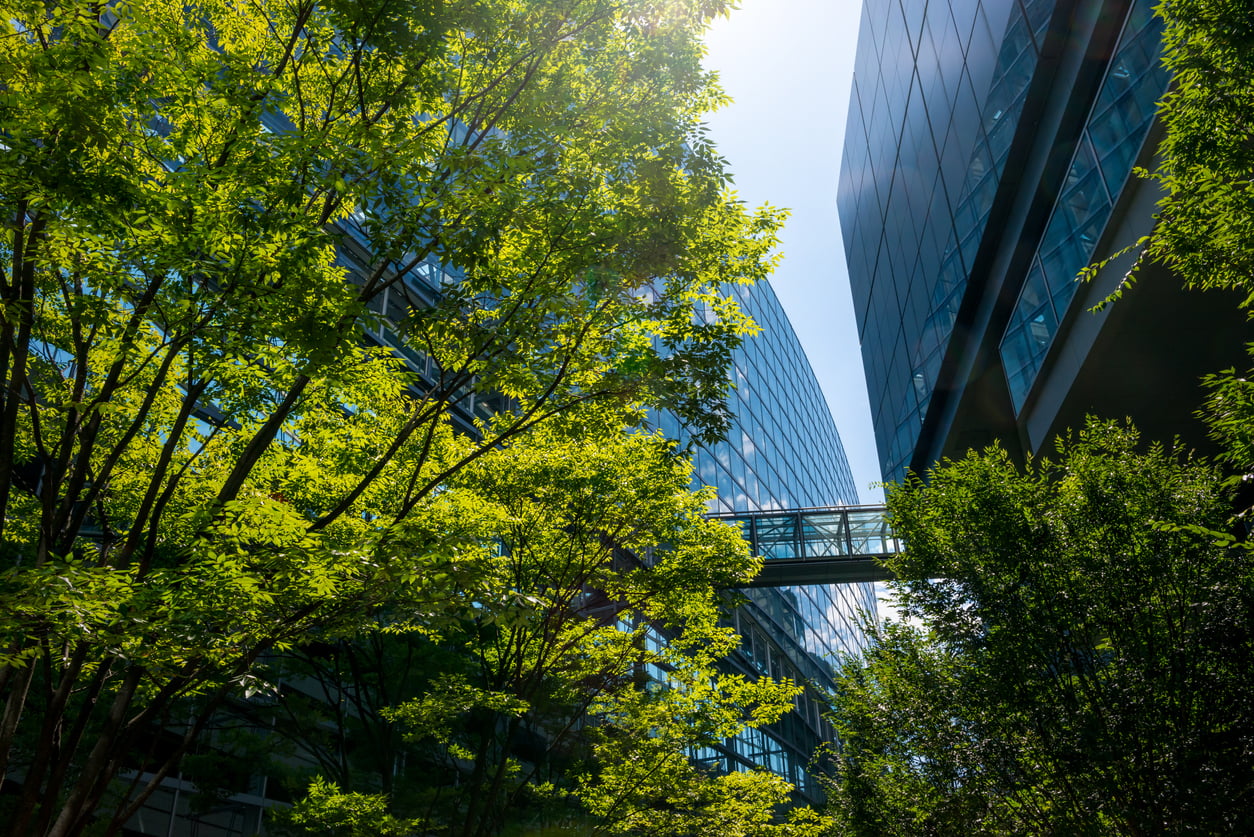New York City’s Local Law 97 (LL97) – considered the city’s most impactful climate law – entered its first compliance period in January. Affecting around 50,000 of the city’s largest buildings, the law requires buildings to significantly reduce their annual greenhouse gas emissions and energy consumption.
What is NYC’s Local Law 97 (and why does it matter)?
The law, passed in 2019, sets ambitious emissions reduction targets for buildings over 25,000 square feet. By 2030, these buildings are required to slash 40% of their emissions, ultimately positioning themselves to achieve 80% emissions reductions by 2040.
Buildings that exceed the limits face significant fines – $268 for every ton of carbon emitted over their limit with more stringent limits set to come into effect between 2030-2034. A January 2023 study conducted by the Real Estate Board of New York projected that building owners would be hit by $200M in LL97 fines in 2024 and cumulative fines of $900M by 2030.
Today, city data shows that 89% of buildings are in compliance with 2024 targets: an encouraging sign that the efforts made by building owners and operators to reduce carbon emissions are paying off. Updated guidance amending Local Law 97 to allow building owners to mitigate fines in the first reporting period by demonstrating “good faith” efforts to decarbonize their buildings have worked to alleviate concerns about the financial penalties.
However, as we look towards the second reporting period, 63% of large buildings are currently over their 2030 targets risking fine exposure.
How prepared are buildings for this first Local Law 97 compliance period?
Owen Glubiak, Vice President of Revenue at Cortex, recently shared with Facilities Dive that, “The sentiment we hear from our customers is that a majority of the buildings that have already deployed technologies … will be compliant for the first compliance period, 2024-2029.”
These owners have adopted a governance framework that translates corporate energy reduction initiatives into building-level behaviors supported by technology solutions like Cortex that support operational reform.
What strategies can help achieve upcoming Local Law 97 emissions targets?
With limited capital budgets, commercial real estate owners have focused on cost-effective solutions that offer significant carbon reductions. One such solution is the implementation of energy conservation measures (ECMs), given their economic viability and proven track record facilitating carbon reduction.
Technology platforms like Cortex enable building owners to drive operational excellence and maximize efficiency in building assets. These platforms help identify low-cost and no-cost opportunities for energy reductions, such as optimal start-up/shut-down sequencing, continuous commissioning, demand management, and fault detection. These measures can lead to an average energy savings of 10-20% and reduced carbon emissions and costs.
Ongoing efforts to refine operational strategies will prove invaluable as commercial real estate faces the challenges of the moment and meet carbon emissions targets.
The path forward
Local Law 97 continues to drive building-level change in New York City, pushing commercial property owners and operators to adopt sustainable practices and technologies to reduce their assets’ emissions and energy consumption. Industry leaders’ broad confidence in their abilities to comply with emissions restrictions going forward serves as a testament to the effectiveness of these operational reforms. As the City progresses towards its ambitious emissions reduction targets, the further adoption of energy optimization solutions across commercial real estate will prove critical to industry efforts to scale energy reduction and help build a more resilient future for all New Yorkers.
Need help continuing to meet Local Law 97 requirements? Cortex’s enterprise platform surfaces easy-to-action building energy efficiencies that help you optimize operations, avoid regulatory fines, and make measurable, proven progress towards your ESG goals. Get in touch with our team.








